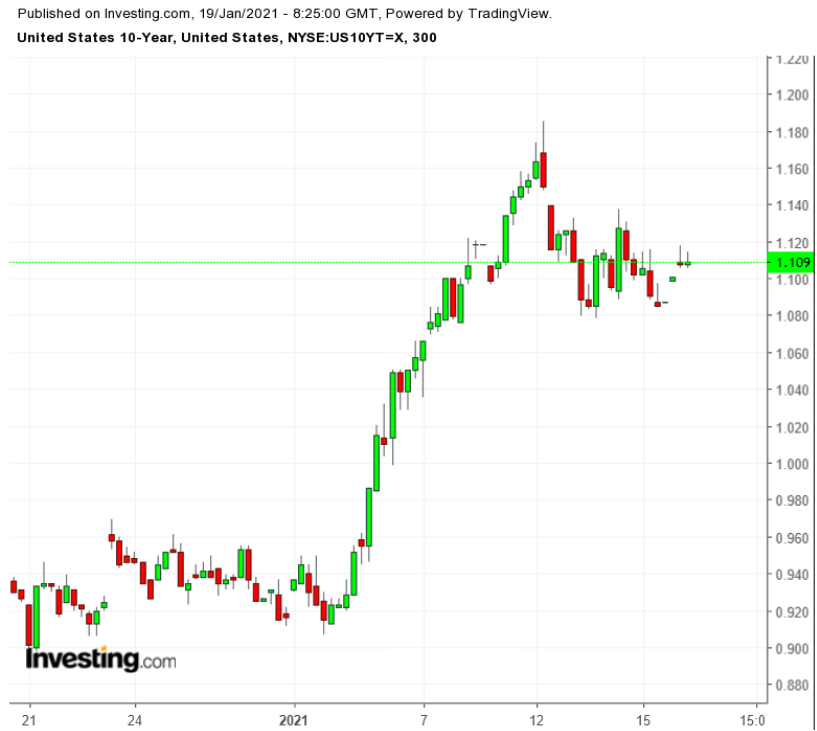There has been some to-do among investors about the US 10-year breakeven rate—a market measure of inflation expectations—breaking above 2% and staying there for a few days. It has been accompanied by a rise in Treasury yields, which, contrary to historic performance, continued to surge despite numerous indications of a tough first half for the US economy.
But there seems to be little genuine worry that inflation is about to spin out of control. The annual Barron’s roundtable found few of the participants expressing any concern, at least for the coming year.
Half Century of Low Inflation Ahead? 10-Y Yield To 1.5%?
Among Federal Reserve policymakers, only super-hawk Esther George, president of the Kansas City regional bank, is warning that inflation could come roaring back once service workers return to work in the second half.
An emeritus economics professor at the London School of Economics, Meghnad Desai, is even predicting a half-century of low inflation, acknowledging that he is sticking his neck out with such a forecast.
Major economic changes have shifted the paradigm, in his view, as robots and artificial intelligence have effectively removed any wage-push for prices for the foreseeable future, at least in the west. Debt service as a percentage of GDP—a flow-to-flow measure he finds more meaningful than the standard debt-to-GDP ratio—is quite low despite the explosion in government borrowing.
Investors in US Treasuries are somewhat more cautious about inflation, and it was clearly one of the factors driving yields higher. More important, analysts say, was the prospect of another $1.9 trillion in fiscal stimulus under the new administration. Joseph Biden will be inaugurated as the 46th president of the United States this week and he has already announced his spending plans for overcoming the impact of COVID-19.

Yield on the benchmark 10-year Treasury shot up to peak above 1.13% from nearly 0.9% at the beginning of the year, though it has retreated below 1.09% in recent trading. The 30-year yield tacked on almost 20 basis points to reach nearly 1.84%. but it has also lost ground.
Some analysts have ratcheted up their forecasts for the year, looking for the 10-year yield to reach 1.5% by the end of the year.
The extra debt will keep Treasury prices depressed—bond yields move inversely to prices—these analysts reckon, as will the prospect of a strong economic recovery once vaccination enables people to get back to work.
In the meantime, however, the slow rollout of the vaccine and unfavorable economic data is dampening the selloff in Treasuries and the surge in yields, prompting some investors to seize the moment and not wait for yields to go higher.
Investors snapped up the $38 billion 10-year Treasury note auction last week and then plunged into the $24 billion bond issue. This week brings an auction of $24 billion in 20-year bonds.
Markets are now waiting to see how foreign investors, especially those in Japan, will act. The yen has strengthened against the dollar and hedging costs have fallen. US debt is offering that rare positive yield. But the feeling is Japanese investors wanted to see Treasury yields go a little higher, and that may have been cut short.
Fed policymakers have also pushed back on notions that the central bank could “recalibrate”—that is, start tapering—its bond purchases this year, and this has dampened yields further.
